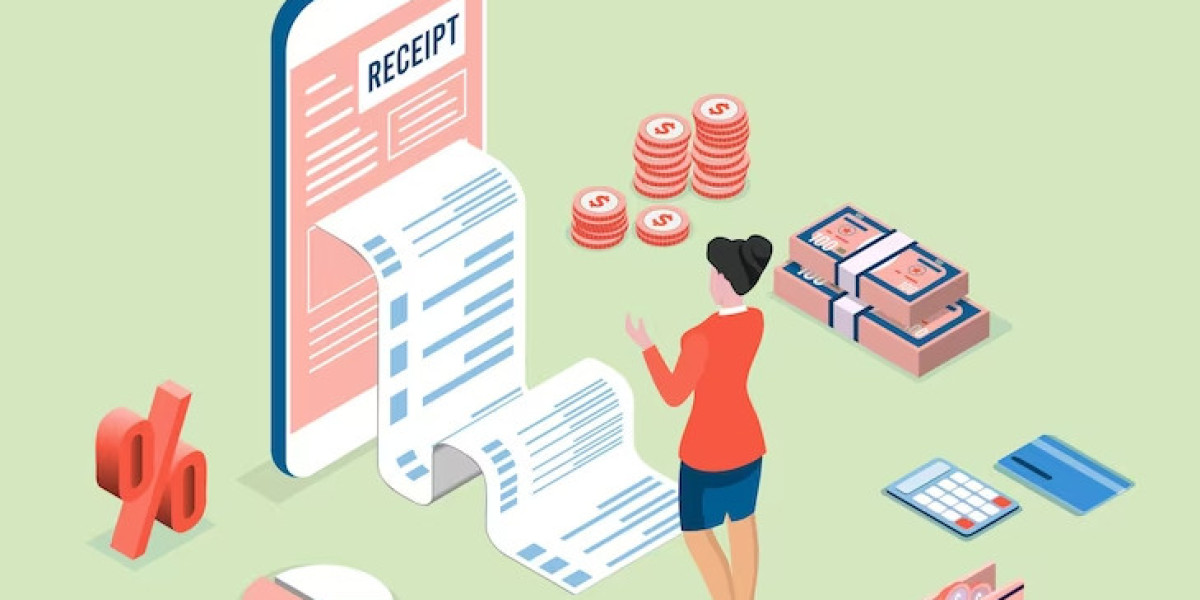Introduction to OCR and its Benefits for Invoicing
In the fast-paced world of business, managing invoices can often feel like a daunting task. The sheer volume of paperwork and data entry can overwhelm even the most organized accountant. Enter Optical Character Recognition (OCR) technology—a game-changer for streamlining invoice processing. Imagine transforming piles of paper into easily manageable digital records with just a few clicks.
OCR not only saves time but also significantly reduces errors that come with manual data entry. It allows you to focus on what truly matters: growing your business and ensuring financial accuracy. Whether you're a small startup or an established enterprise, integrating OCR into your accounting system can unlock new levels of efficiency and productivity.
Ready to dive in? Let’s explore how you can set up OCR for invoices step-by-step and harness its powerful benefits!
Understanding the Types of OCR Technology
OCR technology comes in various forms, each tailored to different needs. At the core, there’s traditional OCR, which scans and converts printed text into digital format. This is great for basic document processing.
Then there's Intelligent Character Recognition (ICR). Unlike standard OCR, ICR can read handwritten text. It's useful for invoices with varied handwriting styles but may require more training to enhance accuracy.
Another type is Optical Mark Recognition (OMR), designed to detect marks on forms—think surveys or test papers. It's not as versatile as other types but excels in specific applications.
Machine Learning-enhanced OCR adds another layer by using algorithms that improve over time. It adapts based on user input and learns from its mistakes, delivering better results as it processes more documents.
Understanding these technologies helps you choose the right solution for your invoicing needs.
Factors to Consider before Implementing OCR for Invoices
Before diving into OCR for invoices, consider your business size and volume of transactions. A small startup may not need an advanced system, while a large corporation might require robust capabilities to handle high volumes.
Next, evaluate the current accounting software you use. Compatibility is key; ensure that the OCR solution can integrate seamlessly with your existing platform.
Think about security as well. Invoicing often involves sensitive information. Choose OCR technology that prioritizes data protection and compliance with regulations like GDPR or CCPA.
User training is another crucial factor. Your team must feel comfortable using the new system to maximize efficiency and minimize errors.
Budget constraints play a significant role in decision-making. Look for solutions that offer good value without compromising essential features or support services.
Step 1: Choosing the Right Accounting System for OCR Integration
Choosing the right accounting system is crucial for successful OCR integration. Look for software that supports seamless data capture from invoices. Not all systems are built the same, so it's essential to evaluate features carefully.
Consider cloud-based solutions for flexibility and accessibility. These often provide better support for third-party applications, including OCR tools. Scalability also matters; ensure your chosen system can grow with your business needs.
User-friendliness should not be overlooked. A complicated interface can hinder efficiency when processing invoices. Opting for intuitive platforms will save time and reduce training costs.
Do some homework on compatibility as well. Ensure that the accounting software can easily connect with popular OCR solutions in the market—this eliminates potential headaches during integration later on.
Check reviews and get a feel for customer support services before making a commitment. Solid support makes troubleshooting much easier down the line.
Step 2: Setting Up Your OCR Software
Now it's time to set up your OCR software. Start by choosing a solution compatible with your accounting system. Make sure it meets all your needs.
Once installed, configure the settings for optimal performance. This usually involves selecting the languages you’ll be processing and fine-tuning recognition parameters to suit various invoice formats.
Next, import sample invoices into the software. This helps in training the system to recognize specific layouts and data fields unique to your organization.
Don't forget about user permissions. Ensure that only authorized personnel can access sensitive financial data while allowing easy usage for those who need it.
Familiarize yourself with any additional features provided by the software. Advanced options like automatic updates or integration with other tools can enhance efficiency further down the line.
Step 3: Testing and Fine-Tuning Your OCR System
Once your OCR services are set up, it’s time to put it to the test. Start by running a batch of sample invoices through the system. Check how accurately the data is extracted from each document.
Pay attention to common fields like invoice numbers, dates, and amounts. Note any discrepancies between what was captured and what’s on the original documents.
Fine-tuning may involve adjusting settings within your OCR software. Consider factors like image quality and font types that could affect extraction accuracy.
Don’t hesitate to retrain your model if it's learning from errors. Regular assessments will help maintain high performance as you add new invoice formats over time.
Keep an eye on feedback loops too; they can provide insights into recurring issues or areas for improvement in real-time processing efficiency.
Troubleshooting Common Issues with OCR for Invoices
When using invoice OCR, some common issues can arise. One frequent problem is inaccurate data extraction. This often stems from poor-quality scans or unusual layouts. Ensure your documents are clear and standardized to improve results.
Another issue you might face involves software compatibility. Not all accounting systems play nicely with every OCR tool. Double-check that the software you choose integrates smoothly with your existing setup.
If you're encountering slow processing times, it could be due to large file sizes or complex formats. Try simplifying your documents before uploading them into the system.
Occasionally, misclassified invoices can disrupt workflows as well. Regularly train and update your OCR system to recognize different invoice types accurately.
Don’t forget about language support either; if you're working with international vendors, make sure your OCR solution handles multiple languages effectively for seamless operations.
Conclusion
Implementing OCR for invoicing can transform your accounting processes. By automating data extraction, you save time and reduce human error. This technology allows for greater accuracy in processing invoices, leading to improved financial management.
With the right preparation and tools, setting up OCR is straightforward. Choosing a compatible accounting system sets a solid foundation. Proper setup of the software ensures that it functions optimally. Testing and fine-tuning are essential steps that enhance performance.
Remember to address any issues as they arise during implementation. Troubleshooting common problems will help maintain efficiency in your workflow.
Embracing OCR technology not only streamlines tasks but also empowers your business with better insights into financial operations. Adopting these practices today positions you for future success in an increasingly digital world.



